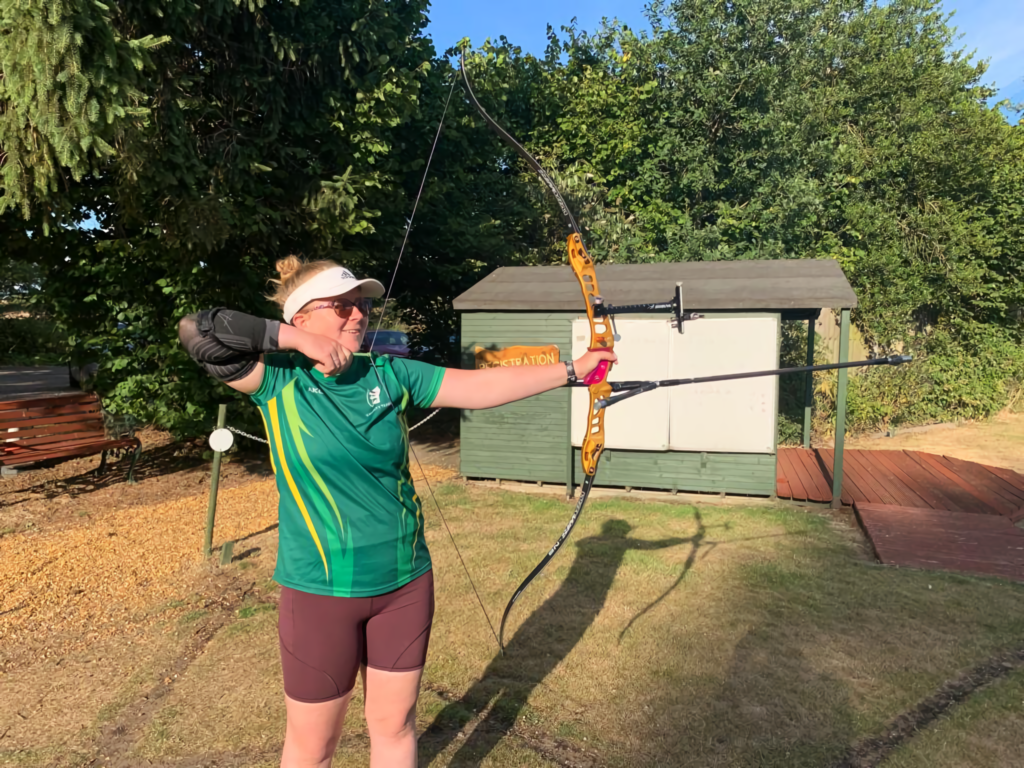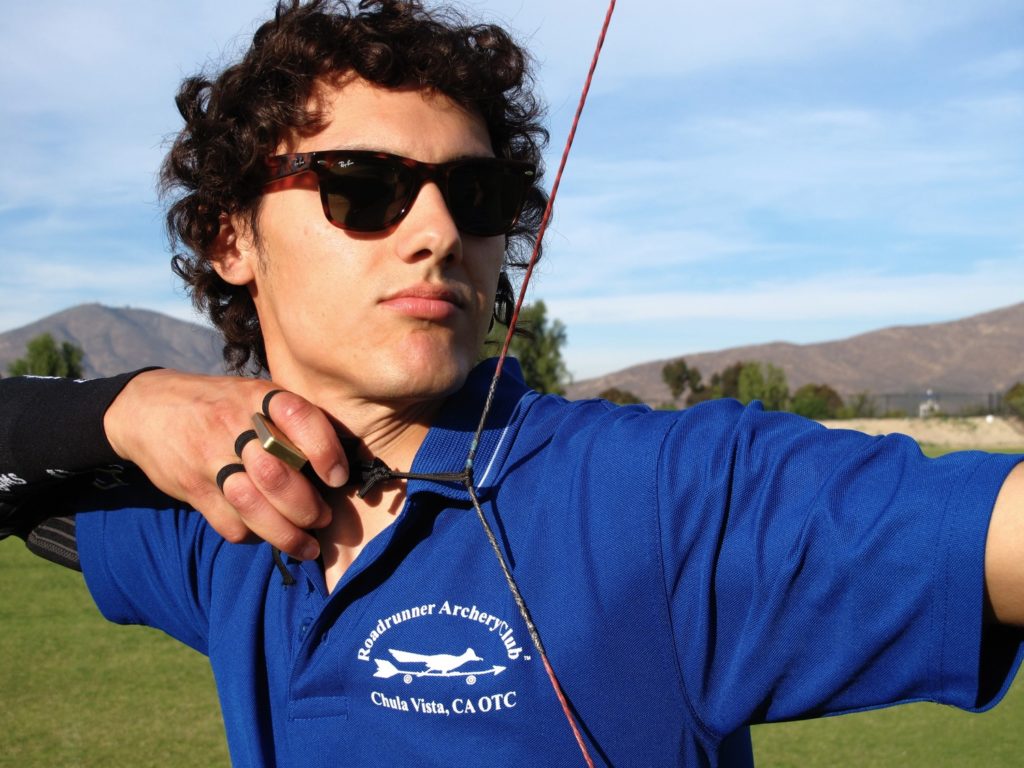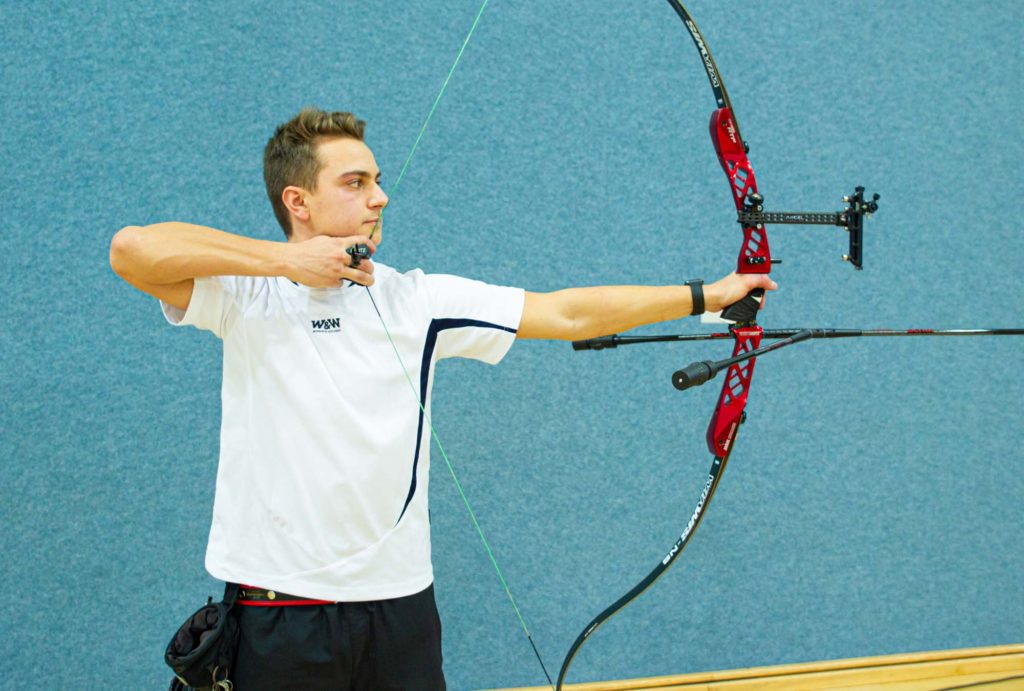Irish international Rebekah Tipping reminds you of what’s really important
Bow drills, bow holds, reversals: whatever you call them, this is one of the best ways to improve your strength without having to spend hours at the range every day. Many archers know this, yet anecdotal evidence suggests that very few archers do so.
By some professional estimates, more than 90% of the archery population is not actually fit to shoot their bow, resulting in a lower standard of performance than they would otherwise be capable of. More pertinently, just shooting a lower poundage does not get around the underlying flaw.
Being able to fully control your body while handling your bow, for a large number of shots and over an extended period of time, is a prerequisite for good performance in recurve archery. Some top compounders use an old recurve bow for reversals training, too. A simple description of this exercise is holding the bow at full draw and resting between sets.
The aim is to produce fatigue in the muscles to simulate a long shooting session in a short space of time. Building up the length of time you hold the bow and/or the number of times you repeat the holds will result in a higher capacity for shooting your bow during long competitions.
During 2020, when archery clubs were closed, those of us who had no access to shooting facilities had a choice to make: to leave the bow forgotten for an indeterminate length of time or do bow drills to maintain strength until the clubs reopened.
My archery friends and I were in the latter camp and used group-chatting platform Discord to coordinate our bow drills. This is where I learnt that bow drills were a lot more than the ‘hold for 30 seconds, rest for 30 seconds’ that I had previously known. There is nothing wrong with doing that, but it can get incredibly dull after a few sessions so it’s best to mix things up if you can.
To get started, you will need an interval timer app on your phone or computer, or you can simply use a stopwatch if you don’t mind keeping track of the timings yourself. I use the Seconds app, as you can make completely custom timers from scratch and colour code hold and rests. Then you are ready to start programming in some sessions. You will also need your bow (I use a second bow, rather than my competition one, with a wrist weight strapped to the riser).
Start by drawing the bow with your tab as normal – serious archers will likely want to invest in an elbow sling, also known as a shot trainer. The best-known modern version of these is produced by Astra Archery; older archers may have used a device called a formaster. You can also find instructions on the internet for making your own device.
The elbow sling reduces the tension in your hand as you hold the bow for longer periods of time than you would while shooting, allowing the back muscles to take the weight of the bow and training them to engage correctly. As the string is attached to the elbow, doing these exercises has the added benefit of helping to improve alignment through the shoulders.
I use a variety of sessions, ranging from holding for a set time and resting for the same amount of time, to increasing the time you hold the bow with brief ‘down and up’ movements to half draw. Mixing up your sessions is the best way to keep yourself interested, so I even have one session I made using a random number generator that selects a hold time between 5 and 25 seconds, with a constant 15-second rest between sets.
This can get challenging if you have a few long holds in a row, but can be more relaxing if you have a stream of shorter holds. A drill that can be done at the end of a regular shooting session is known as ‘7 plus 2’ and consists of holding the bow at full draw for seven seconds, taking two seconds to bring the bow to a half draw and back to full draw again. The Online Archery Academy suggests performing this at the end of a session to see how many you can do, with eight repetitions being a good baseline for being able to control your bow.
One of the main benefits of bow drills is the short amount of time taken for the same number of ‘draw and holds’ as a shooting session would be. Generally, if I were to train at my archery club on a weekday evening, shooting 60 arrows in six arrow ends at 70m would take around an hour, which probably says a lot about the speed at which I walk to and from the target!
But a bow drills session of 60 arrows worth of draws (equating every five seconds of holding to one arrow) would take about 15 minutes. This is for a simple and relatively easy beginner session of 15-second holds followed by 30-second rests for 20 reps.
This isn’t to say that bow drills should replace shooting sessions entirely, as there is obviously a lot of fine motor control involved in shooting a bow that cannot be rehearsed through drawing and holding with an elbow sling, such as getting a clean release of the string or pushing your bow arm towards the target.
But bow drills are an excellent way to supplement training, especially if you are tight for time, and they are a perfect way to tide you over strength-wise if you cannot make a training session at your club. In his book, The Competitive Archer, Simon Needham tells a story of an archer who moved to the USA from the UK for a year and could not train at a club while he was there.
He did bow drills every day, and when he returned to the UK was still able to shoot his competition bow, and achieved the same standard of scores as when he left. Olympian Patrick Huston recalls taking a club mate from 540s on a Portsmouth to 570 in a month, simply by bow training for 10 minutes at the start of every session – no tech nical work, just reversals.
Tom Hall, the Team GB archer, is my go-to person to ask about bow drills, as he was the person who introduced me to the variations on holds and rests that I use today, during online sessions in 2020. I asked him if he had anything to say about bow drills to convince more archers to give this exercise a go.
“Bow training is more than just a replacement for shooting,” he told me. “It’s important because it lets you train at a really high intensity in short blocks of time. This lets you progress physically more than you would from just trying to shoot more arrows, and the extra strength makes your shooting practice so much more meaningful!”
If you’ve been avoiding bow drills, bear in mind that there’s no getting around them for improving archery. Add a 15-minute bow drill set to the end of your practice sessions for a month and you’ll notice the effect it has on your shooting.
Bow drills: the next level
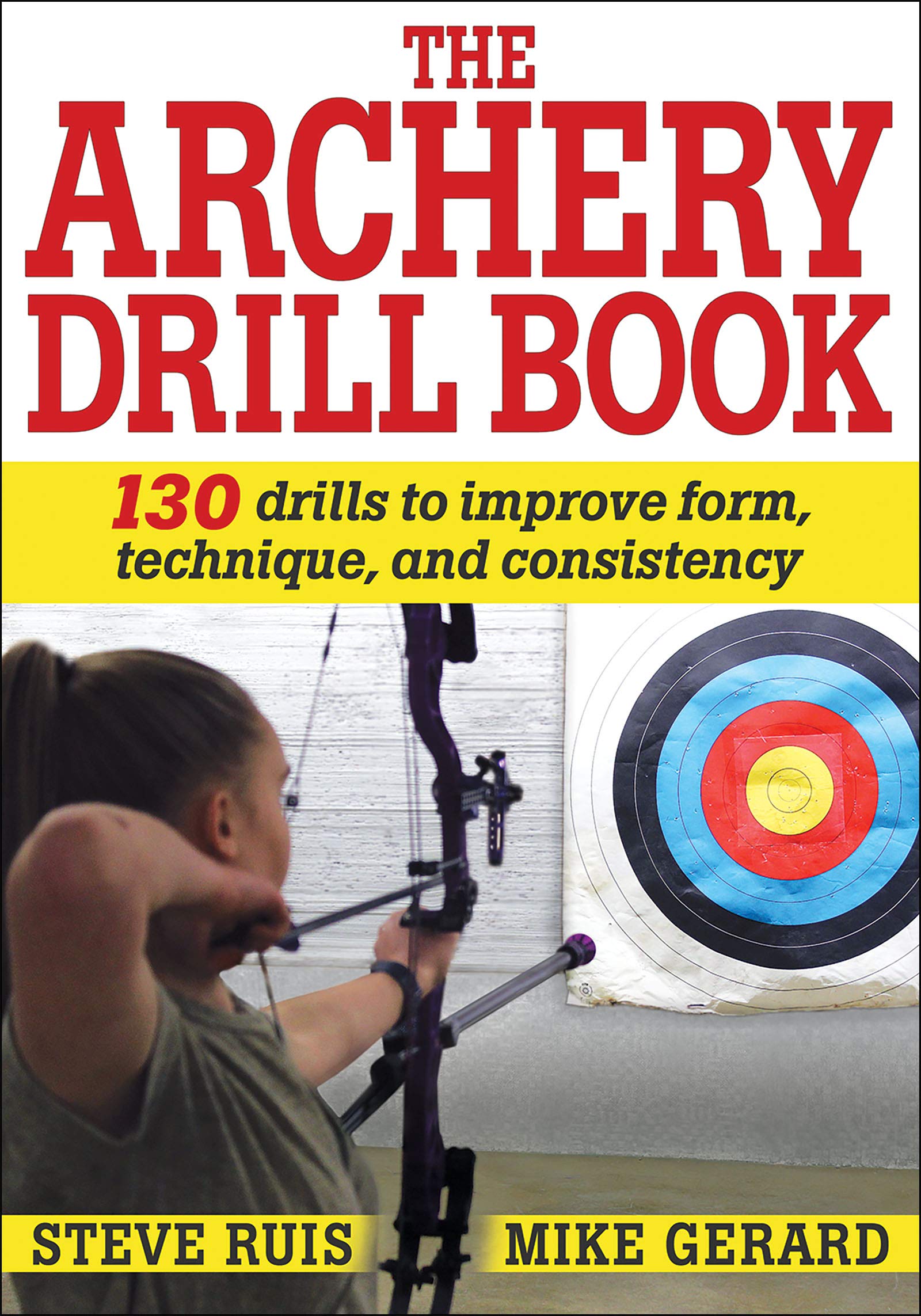
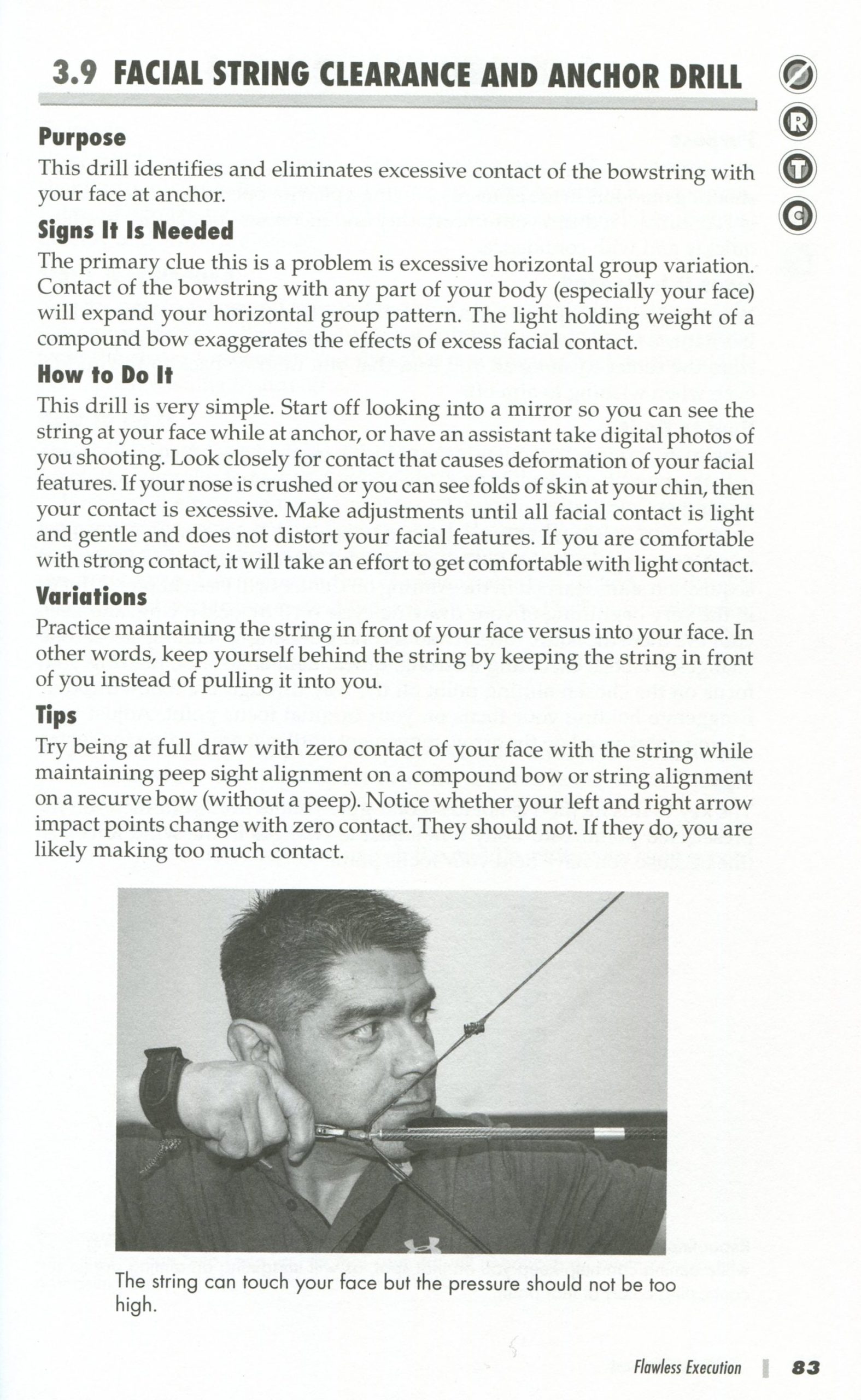
A while ago, Bow International came across this illustrated book, first published in 2020 and marketed as the ‘first of its kind’, containing 130 drills, exercise techniques and other routines to improve archery across multiple bow styles and at all levels.
Many focus on strength and form building, as you might expect, but others are geared more towards exploring different possibilities (such as with stance, for example), as well as ‘ailments’ such as target panic.
Instructions are included for making simple equipment used in some exercises. There are guest contributions from the pantheon of American coaching greats such as Ed Eliason, Larry Wise and Randi Smith, with the UK’s Simon Needham contributing a piece on compression practice.
Pretty much every archer on earth would benefit from some of the routines in this book, although some of them are quite arcane and would be best done in consultation with an experienced coach. It makes a great present for a serious archer, too!


